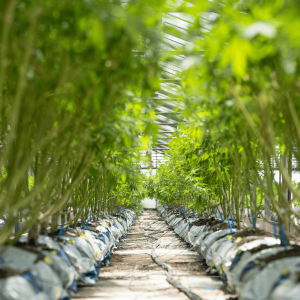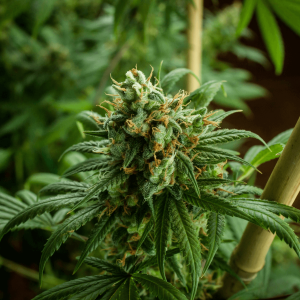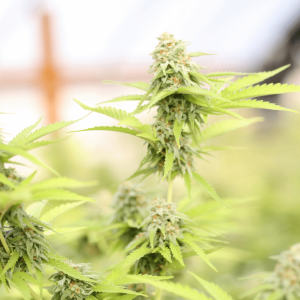Cannabis cultivation is booming as recreational and medicinal use becomes legal in more places. Whether you’re just starting out or have some experience, picking the right seeds is key to a great harvest. Among the many options, feminized vs autoflower seeds stand out and can really affect your growing process and results.
In this blog, we’ll break down the differences between feminized and autoflower seeds, looking at their unique traits, benefits, and any potential downsides. Let’s dive in and see what each type has to offer!
What Are Feminized Seeds?
Feminized seeds are specially bred cannabis seeds designed to produce female plants. The science behind feminization involves manipulating the natural breeding process to eliminate male chromosomes, ensuring that nearly 100% of the resulting plants are female.
This method often uses techniques like stressing female cannabis plants into producing pollen, which is then used to fertilize other female plants. The resulting seeds lack male chromosomes, making the likelihood of male plants extremely rare.
Benefits of using feminized cannabis seeds for cultivation include:
- Increased Yield: Since only female plants produce buds, you maximize your output.
- Simpler Growing Process: No need to identify and remove male plants, saving time and effort.
- Consistent Quality: Female plants tend to offer more consistent flavor and potency.

What Are Autoflower Seeds?
Autoflower seeds are a type of cannabis seed that automatically transitions from the vegetative phase to the flowering phase without needing changes in light cycles. This unique trait is derived from cannabis ruderalis, a subspecies of cannabis known for its ability to thrive in harsher climates with minimal sunlight.
The ruderalis genetics bestow autoflowering plants with their rapid growth and hardiness, making them an ideal choice for novice growers or those seeking a quicker turnaround.
Benefits of using autoflowering marijuana seeds for cultivation include:
- Faster Harvest: Generally ready to harvest in 8-10 weeks from germination.
- Ease of Growth: Less sensitive to light changes, making them simpler to manage.
- Compact Size: Suitable for indoor grows with limited space.
- Resilience: Better resistance to pests and diseases due to their ruderalis heritage.

Growth Cycle Differences
When it comes to the growth cycle, feminized and autoflower seeds have some clear differences.
Feminized seeds follow a more traditional path and require specific light cycles to transition from the vegetative phase to the flowering phase. Typically, growers need to switch from an 18/6 light cycle (18 hours of light, 6 hours of darkness) during the vegetative stage to a 12/12 light cycle to induce flowering. This dependency on photoperiod means the duration from seed to harvest can vary, often taking anywhere from 10 to 20 weeks in total.
In contrast, autoflower seeds boast an independent growth cycle, allowing them to automatically switch phases without relying on light changes. Their rapid development leads to a much shorter lifecycle, with many strains ready for harvest in as little as 8-10 weeks.
Yield Comparison
When comparing yields, feminized plants generally come out on top. Because these plants have a longer vegetative stage with controlled light cycles, they can grow larger and produce more buds, resulting in higher yields. On average, a well-cultivated feminized plant can yield anywhere from 1.5 to 2.5 ounces per plant, though experienced growers can achieve even more under optimal conditions.
Autoflower plants, with their compact size and faster lifecycle, typically produce smaller yields. You can expect anywhere from a half-ounce to 2 ounces per plant. However, several factors can affect yields in both types, including genetics, growing conditions, and the grower’s level of expertise.
Cultivation Requirements
To get the most out of your cannabis plants, understanding their cultivation requirements is crucial. Let’s take a closer look at what feminized and autoflower seeds need to thrive.
Environmental Needs for Feminized Seeds
Feminized seeds thrive in an environment where they receive consistent care and attention. Since they depend on specific light cycles, these plants often require a well-regulated indoor setup, although they can be successfully grown outdoors with careful planning.
During the vegetative phase, they need around 18 hours of light each day, reducing to 12 hours to trigger flowering. Temperature control is crucial, maintaining a range between 70-85°F during the day and slightly cooler at night. Humidity levels should start high (~60-70%) for young plants and gradually drop to around 40-50% as they mature.
Environmental Needs for Autoflower Seeds
Autoflower seeds, owing to their hardy ruderalis genetics, are much more adaptable to varying environmental conditions. They don’t rely on light cycles, making them perfect for growers who can’t strictly control lighting.
A stable temperature range between 70-85°F is ideal, with humidity levels around 40-50% throughout their lifecycle. Due to their robustness, autoflowers can handle slight fluctuations better than feminized seeds and are thus great for outdoor grows even in less-than-perfect climates.
Soil, Nutrients, and Watering Requirements
Both feminized and autoflower plants flourish with the right soil, nutrients, and watering regimen. High-quality, well-draining soil with a balanced pH of about 6.0-6.5 is crucial for healthy growth. When it comes to nutrients, start with a nitrogen-rich fertiliser during the vegetative stage, and switch to phosphorus and potassium-heavy formulas as flowering begins.
Watering depends on the plant’s size and soil moisture levels – overwatering can lead to root rot, while underwatering can stress the plant. It’s generally better to water deeply but less frequently, ensuring the soil remains moist but not waterlogged. Be mindful of the specific needs at each growth stage, as young plants require less frequent watering compared to mature ones.

Growing Difficulty
When it comes to growing cannabis, the difficulty level largely depends on the type of seeds you choose.
Feminized seed cultivation generally requires a bit more skill and attention to detail. These plants need specific light schedules and a carefully controlled environment, which can be challenging for beginners. Some common issues include managing the photoperiod to induce flowering and keeping an eye on temperature and humidity levels. Solutions like investing in timers for lights and monitoring equipment can make a big difference.
On the other hand, autoflower seeds are much easier to work with, making them ideal for novice growers. Their ability to flower automatically without changes in light cycles simplifies the process. Common challenges, like overwatering or nutrient deficiencies, can still arise, but their robust nature means they bounce back more readily.
Keeping a close eye on the plants and adjusting care as needed can help address these issues effectively.
Pros and Cons
Advantages and Disadvantages of Feminized Seeds
Advantages:
- Higher Yields: Due to longer vegetative periods, feminized plants generally produce more buds.
- Controlled Growth: Ideal for growers looking to maximize plant size and output with specific light schedules.
- No Male Plants: Eliminates the need to identify and remove male plants, simplifying the growing process.
Disadvantages:
- Sensitive to Light Cycles: Requires precise control of light cycles to transition between growth stages.
- Longer Growing Time: Typically takes longer from seed to harvest, averaging between 10 to 20 weeks.
- More Demanding Care: Higher need for attention to environmental factors like temperature, humidity, and light.
Advantages and Disadvantages of Autoflower Seeds
Advantages:
- Faster Growth Cycle: Often ready for harvest within 8-10 weeks, making them ideal for quick turnarounds.
- Less Light Sensitive: Do not require strict light schedules, making them simpler to grow.
- Compact Size: Perfect for indoor grows with limited space and discreet outdoor cultivation.
Disadvantages:
- Lower Yields: Produces smaller plants with less overall bud compared to feminized seeds.
- Less Control Over Growth: Automatic transitioning between stages means less control over plant size and development.
- Potentially Less Potent: Some strains may be less potent compared to their feminized counterparts, although this varies.

Conclusion
To wrap things up, we’ve explored the intricacies of growing cannabis and hemp flower using feminized and autoflower seeds. Feminized seeds offer higher yields and greater control over growth, but they require diligent care and strict adherence to light cycles. Meanwhile, autoflower seeds are more beginner-friendly due to their resilient nature and quicker growth cycle, though they tend to produce smaller yields.
Ultimately, the choice between feminized and autoflower seeds depends on your growing experience, available resources, and personal preferences. Many growers find it useful to experiment with both types to discover what works best for their unique setup and goals. And with the convenience of cannabis delivery services, you can easily access a variety of seeds to try. Happy growing!
Frequently Asked Questions
1. What is better, feminized vs autoflowering?
Choosing between feminized and autoflowering seeds really depends on your growing goals and experience level. Feminized seeds are great if you’re looking to maximize yields and have complete control over the growth cycle. However, they require more attention and precise environmental management.
On the other hand, autoflowering cannabis seeds are perfect for beginners or those with limited time and space, as they are easier to grow and not reliant on light cycles. They might produce smaller yields, but their robustness can lead to a more forgiving growing experience.
2. What are the disadvantages of feminized seeds?
The main disadvantages of feminized seeds are their sensitivity to light cycles and the need for a more controlled growing environment. This means you’ll need to invest in timers for your lights and tools to monitor temperature and humidity levels closely.
Additionally, feminized seeds generally take longer to grow from seed to harvest compared to autoflowers, which can be a drawback if you’re looking for quicker turnarounds.
3. Are autoflowers less potent?
Not necessarily. The potency of autoflowers can vary by strain, just like feminized seeds. While early generations of autoflowers were often less potent, modern breeding techniques have significantly improved their THC and CBD levels.
Many autoflowering strains can now rival their feminized counterparts in terms of strength and effect, making them a viable option for both recreational and medicinal growers.
4. Is it better to grow autoflowers?
Autoflowers can be a better choice if you’re new to growing cannabis, have limited space, or need a quicker harvest. Their resilience and independence from light cycles simplify the growing process, reducing the chances of common mistakes.
However, if you have the experience and resources to manage a more controlled environment, feminized seeds might offer higher yields and more potent strains. Ultimately, the best choice depends on your specific needs and growing setup.

 Rewards
Rewards




